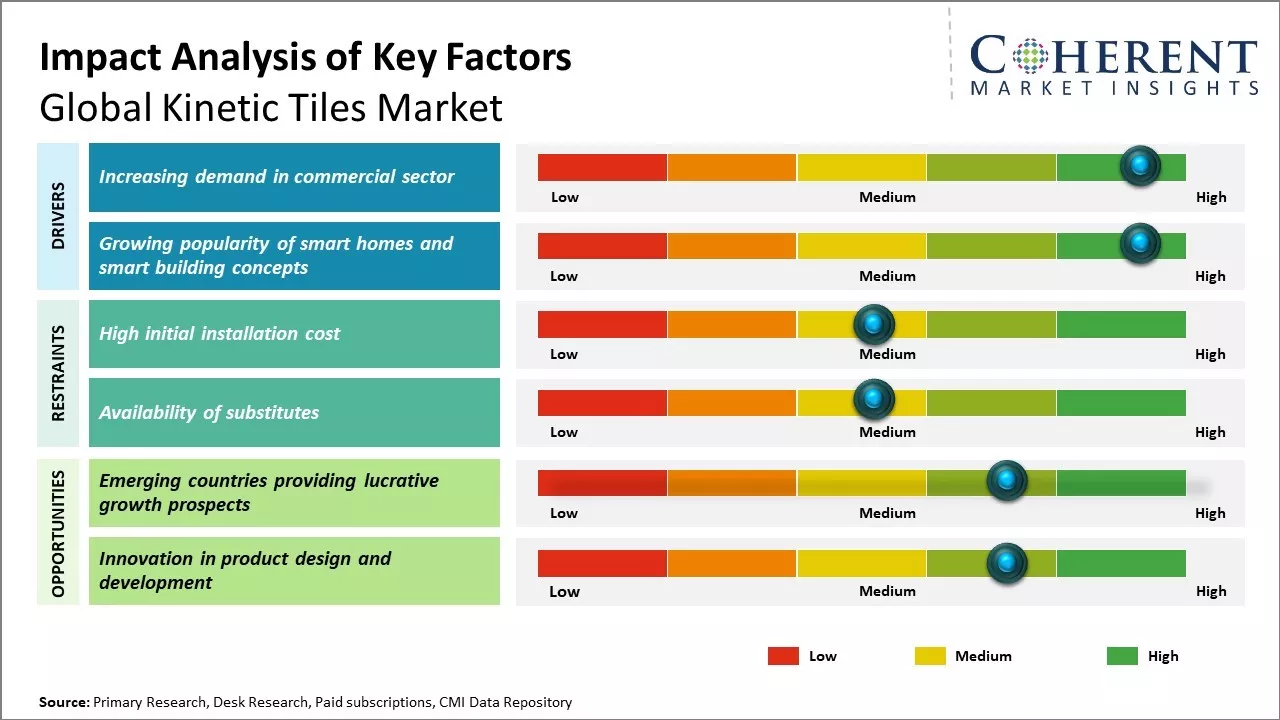The global kinetic tiles market is estimated to be valued at USD 34.53 Bn in 2025 and is expected to reach USD 47.66 Bn by 2032, exhibiting a compound annual growth rate (CAGR) of 4.7% from 2025 to 2032.

To learn more about this report, Request sample copy
Rapid urbanization coupled with increasing demand for innovative architectural designs from the commercial sector is expected to support the demand for kinetic tiles, according to data by Invest India in 2022, The construction Industry in India is expected to reach US$1.4 Tn by 2025. Additionally, growing focus of architects on kinetic facades to address issues like natural daylighting and ventilation is further anticipated to drive the market growth. Kinetic tiles allow dynamic shading and reduce overheating since the tiles can be reconfigured or transformed in different angles to manage or optimize daylight and ventilation. Rise in commercial construction and infrastructure projects worldwide presents growth opportunities for vendors engaged in kinetic tiles during the forecast period. However, high initial costs of kinetic tiles as compared to conventional building materials may hamper the market growth to some extent over the forecast period.
Market Driver - Increasing demand in commercial sector
The commercial real estate sector has been thriving across major cities worldwide. For instance, according to data by IBEF in 2021, the real estate sector in India is expected to reach USD 1 trillion in market size by 2030. With more and more companies setting up offices across various industries, the need for innovative office spaces has risen tremendously. Traditional tile floors are highly unsuitable for commercial areas that see heavy foot traffic on a daily basis as they easily get damaged. Kinetic tiles have emerged as a sustainable alternative to solve this issue. Made of durable materials like porcelain and natural stone composite, these movable floor tiles are extremely resilient against wear and tear. They also allow for easy reconfiguration of office spaces whenever the need arises without major construction work.
Many large corporations such as Pavegen Systems Ltd., Energy Floors, POWERleap Inc., are actively remodeling their office infrastructure with kinetic tiles to optimize workspace utilization. Their modular interlocking design enables quick rearrangement of desks, workstations and floor plans according to changing project or team requirements. This boosts productivity and collaboration within office premises. Kinetic tiles have minimum lifecycle costs as they do not need frequent replacement unlike rigid flooring. Moreover, their maintenance involves simple periodic cleaning without extensive repairs. Several companies such as Pavegen Systems Ltd., Energy Floors, are also installing them in high traffic lobby areas, cafeterias, pantry sections and lounge spaces to withstand heavy usage. As commercial real estate portfolio expands globally, the incorporation of innovative flooring solutions will grow in tandem to suit dynamic office needs.
Joining thousands of companies around the world committed to making the Excellent Business Solutions.
View All Our Clients